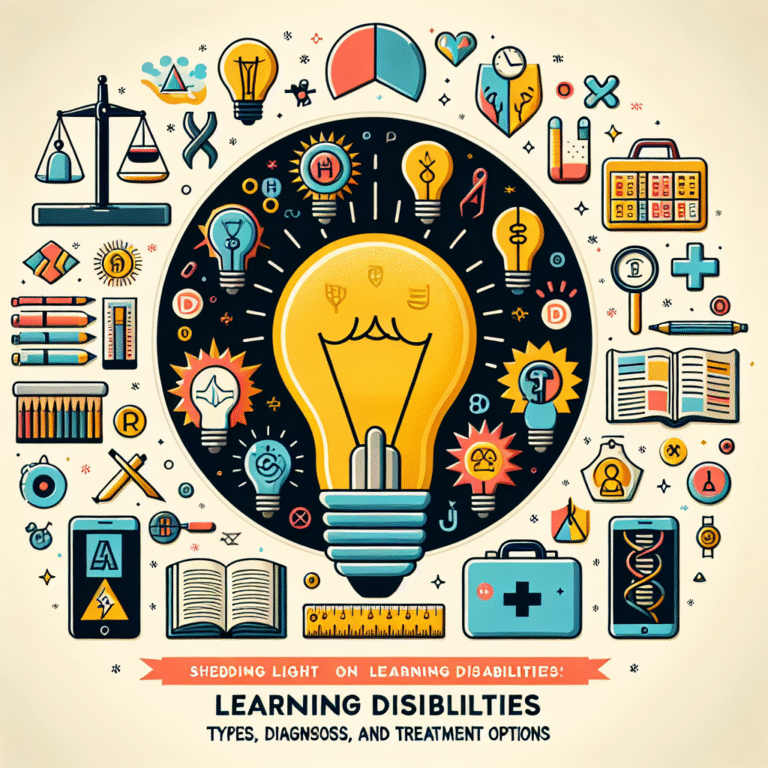
Navigating the Complex World of Personality Disorders: Symptoms and Types Demystified
Introduction
In a world increasingly focused on mental health and well-being, understanding personality disorders is more important than ever. These complex conditions not only affect individuals but also have a ripple effect on families, friends, and communities. As we delve into navigating the complex world of personality disorders: symptoms and types demystified, it’s vital to recognize that these disorders are not simply labels; they represent real challenges that people face daily. By educating ourselves on the nuances of personality disorders, we can foster empathy and support for those affected.
What Are Personality Disorders?
Personality disorders are defined as enduring patterns of behavior, cognition, and inner experience that deviate markedly from cultural expectations. These patterns are inflexible, pervasive, and lead to significant distress or impairment. The understanding of personality disorders has evolved, moving from the stigma-laden perceptions of the past to a more nuanced view that recognizes them as complex, often treatable conditions.
Types of Personality Disorders
Personality disorders typically fall into three clusters according to the DSM-5 (Diagnostic and Statistical Manual of Mental Disorders, Fifth Edition):
Cluster A: Odd or Eccentric Disorders
Paranoid Personality Disorder: Characterized by pervasive distrust and suspicion of others. Individuals often believe that others have hidden motives.
Schizoid Personality Disorder: Marked by a lack of interest in social relationships and a limited range of emotional expression.
- Schizotypal Personality Disorder: Involves acute discomfort in close relationships, cognitive distortions, and eccentric behaviors.
Cluster B: Dramatic, Emotional, or Erratic Disorders
Antisocial Personality Disorder: This is characterized by a disregard for others’ rights, impulsive behaviors, and a lack of remorse for harmful actions.
Borderline Personality Disorder: Features include unstable relationships, self-image issues, and intense emotional responses.
Histrionic Personality Disorder: Characterized by a pattern of excessive attention-seeking behaviors and emotionality.
- Narcissistic Personality Disorder: Involves a pervasive need for admiration and a lack of empathy for others.
Cluster C: Anxious or Fearful Disorders
Avoidant Personality Disorder: Features significant social inhibition, feelings of inadequacy, and hypersensitivity to negative evaluation.
Dependent Personality Disorder: Marked by a pervasive and excessive need to be taken care of, leading to submissiveness.
- Obsessive-Compulsive Personality Disorder (not to be confused with OCD): Characterized by a preoccupation with orderliness, perfectionism, and control.
Symptoms Breakdown
Identifying Symptoms
Understanding the symptoms associated with each personality disorder is pivotal in recognition and treatment. Here’s a table summarizing key symptoms:
| Disorder | Key Symptoms |
|---|---|
| Paranoid Personality Disorder | Distrust, suspicion, interpreting benign remarks as malicious |
| Borderline Personality Disorder | Emotional instability, fear of abandonment, intense interpersonal relationships |
| Antisocial Personality Disorder | Lack of remorse, deceitfulness, impulsivity |
| Avoidant Personality Disorder | Social inhibition, feelings of inadequacy |
Case Study: Understanding Borderline Personality Disorder
Consider the case of Anna, a 27-year-old woman diagnosed with Borderline Personality Disorder (BPD). Her intense relationships often oscillated between extremes of idealization and devaluation. After undergoing Dialectical Behavior Therapy (DBT), Anna learned effective coping mechanisms for emotional regulation. Her case illustrates the real-world impact of BPD and the importance of appropriate therapeutic interventions.
Analysis: Anna’s story showcases that with the right treatment, individuals with personality disorders can lead fulfilling lives. It also emphasizes the need for societal understanding rather than stigma.
The Stigma Surrounding Personality Disorders
Stigma can create significant barriers for individuals seeking help. Often, personality disorders are misunderstood, leading to labeling and isolation. Educating ourselves and advocating for a more informed societal view can help dismantle these barriers. Being an ally means understanding that these disorders are not a reflection of someone’s character but rather complex health issues that require empathy and support.
Navigating Treatment Options
When it comes to treatment, various approaches can be effective:
Psychotherapy: Different types of therapy can aid individuals in understanding and managing their symptoms.
- Cognitive Behavioral Therapy (CBT): Helps in restructuring negative thought patterns.
- Dialectical Behavior Therapy: Particularly effective for BPD and focuses on building a life worth living.
Medication: While there are no specific drugs for personality disorders, medication can help alleviate some symptoms like anxiety or depression.
- Support Groups: Connecting with others who have similar experiences can provide a sense of belonging and understanding.
Case Study: The Role of Medication in Treatment
Take the example of Mark, who struggled with Narcissistic Personality Disorder. Initially resistant to therapy, he finally began to engage after medication helped stabilize his mood. This permitted him to explore underlying issues in therapy.
Analysis: Mark’s case shows that a combination of medication and therapy can effectively address underlying symptoms and facilitate personal growth.
Practical Tips for Families and Friends
Supporting someone with a personality disorder can be challenging. Here are a few strategies to help:
- Educate Yourself: Understanding the nuances can empower you to offer appropriate support.
- Encourage Treatment: Support their journey towards healing by encouraging professional help.
- Practice Patience: Change takes time, and patience can make a significant difference.
- Set Boundaries: While supporting loved ones, ensure you’re also protecting your mental health.
Conclusion
Navigating the complex world of personality disorders: symptoms and types demystified is an essential step toward fostering understanding and empathy. By educating ourselves about these conditions, we can reduce stigma and provide meaningful support to those affected. Remember, personality disorders don’t define an individual; they are merely part of a larger human experience. Together, let us promote awareness and compassion.
FAQs
What are the common causes of personality disorders?
- Personality disorders often arise from a combination of genetic, environmental, and psychological factors, including early childhood experiences.
Are personality disorders treatable?
- Yes, while challenging, many can benefit significantly from psychotherapy and appropriate interventions.
How can I help a loved one with a personality disorder?
- Educate yourself, offer support without judgment, and encourage professional help.
What is the difference between a personality disorder and a mental illness?
- Personality disorders are a specific category within mental health, focusing on enduring patterns of behavior, while mental illness encompasses a broader range of conditions, including mood and anxiety disorders.
- Can someone recover fully from a personality disorder?
- Recovery is a journey and can involve significant personal growth; many individuals learn to manage their symptoms effectively.
By exploring the complexities of personality disorders together, we can create a more supportive environment for all. Whether you’re personally affected or seeking to understand, remember that compassion and knowledge are key.










